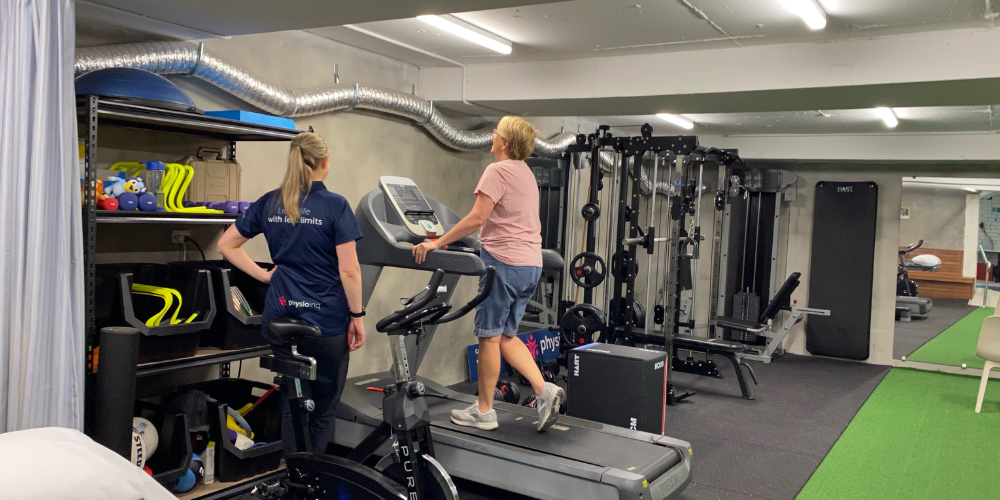Stronger Together: Navigating Osteopenia with Expert Advice and Support
Friday, June 30, 2023
We’ve spoken a few times now about Osteoporosis: what it is, how to manage it, using exercise as treatment. But do you know how to prevent and manage osteopenia before it becomes osteoporosis?
Bone is living tissue that makes up the body’s skeleton. Osteoporosis is a bone disease that develops as a result of decreased bone mineral density and bone mass or when the quality or structure of bone changes. This can lead to decrease in bone strength and increase in risk of fractures. Osteopenia is when the body doesn't make new bone as quickly as it reabsorbs old bone, resulting in a decrease in bone mass.
Bone Density
Most people reach their peak bone mass between the ages of 25 – 30. The best time to build bone density is during rapid years of growth (childhood, adolescence, early adulthood). Peak bone mass is largely determined by genes; though lifestyle factors including diet and exercise can influence whether full bone mass potential is reached, and poor nutrition and/or inactivity decrease peak bone mass.
So, you can maximise bone mass and strength with dietary and physical activity changes, as well as falls prevention strategies.
Osteopenia diagnostic imaging
- Bone mineral density (BMD) is measured by dual x-ray absorptiometry (DEXA).
- Data is analysed to compare BMD values to young healthy populations or age-matched controls.
Prevention of Osteopenia
Where it has been determined that there is a low risk of fall or fracture, and otherwise for children, adolescents & healthy adults, the goal is to maximise bone mass and strength, and to improve muscle strength and functional capacity, through specific exercise. This may include a variety of progressively increasing impact activities e.g. jumping & hopping; recreational sporting activities e.g. basketball, netball, volleyball; progressive resistance training, and balance training.
Low intensity repetitive aerobic training such as swimming or cycling is not recommended for improving bone mineral density.

Osteopenia Management
Where it has been determined that there is a moderate risk of fracture, &/or otherwise there is a diagnosis of osteopenia and not osteoporosis, the treatment goal should be to preserve or improve bone mass and strength, and improve muscle strength, power and balance.
Osteopenia Exercises
- similar weight-bearing impact activities and progressive resistance training to low-risk individuals
- some clients may require moderate intensity Progressive resistance training before advancing to high-intensity Progressive resistance training, to condition the musculoskeletal system before introducing impact exercises
- Pain-free exercises
- Falls prevention via progressively challenging balance, posture, and mobility exercises
Anyone with pain, or poor balance, or other comorbid conditions, should perform exercises supervised, and have an individual treatment plan created for them. Everyone should be taught to perform safe lifting and postural techniques to avoid dangerous or excessive loading during exercise and recreational activities. For more information, my colleague has collected some great exercises together in this article about exercising with osteoporosis.
Contact us today to book for an appointment with an Accredited Exercise Physiologist, who will work with you to design an individualised exercise treatment plan, and you may consider joining our Strength & Conditioning Group Exercise Classes for supervision and company while you manage and treat bone density issues.

